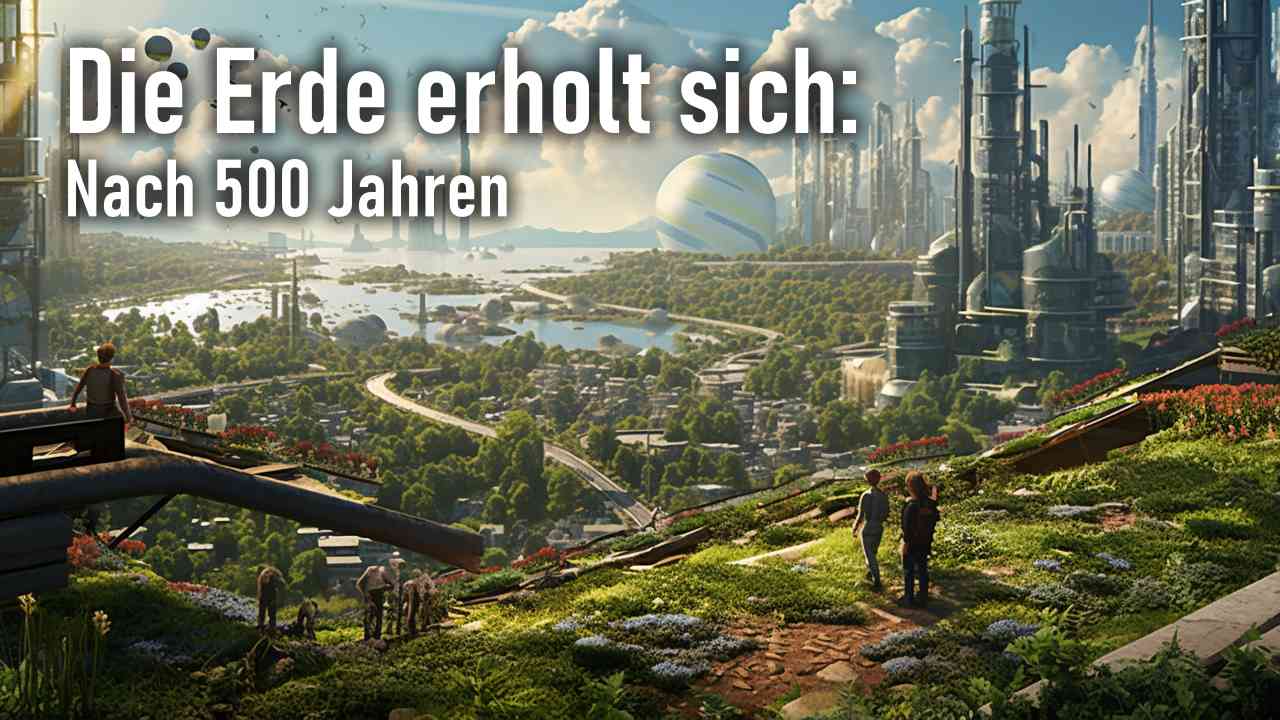
2460 Ökologischer Turnaround-Punkt auf der Erde

Nach 500 Jahren Missbrauch und sich selbst verstärkenden Klimaabweichungen, beginnt die Biosphäre sich zu erholen.
Der Orunaiyeomi-Index wächst erstmals seit einem halben Jahrtausend. Das bedeutet, dass die Erde sich langsam erholt. Die Umweltbelastung erreicht nun ein Maximum und ist danach rückläufig. Der Orunaiyeomi-Index berechnet die Qualität der Biosphäre bezogen auf den Idealzustand unter Berücksichtigung langfristiger Trends.
Seit Beginn der Industrialisierung sank der Orunaiyeomi-Index. Der Zustand von Natur, Umwelt und Klima verschlechterte sich. Mehrere Jahrhunderte Umweltverschmutzung und Überbeanspruchung führten zu einer sich selbst verstärkenden Belastung der Biosphäre (Runaway-Effect). Viele Teile der Biosphäre drifteten in neue (für die Menschen ungünstige) Gleichgewichtslagen. Die Entwicklung beschleunigte sich ab 2250, da Antarktis, Permafrost und tiefe Ozeane erst mit einer Verzögerung stark reagierten.
Unter der neosozialistischen Regierung der Union beginnt ab 2350 das Kubadwanso-Programm mit dem Ziel, die Erde zu sanieren. In einer konzertierten Aktion über mehrere Jahrzehnte werden viele Probleme der Biosphäre angegangen. Die Sonneneinstrahlung wird reduziert, um die globale Temperatur zu senken und aus der Atmosphäre werden Treibhausgase abgeschieden. Es gibt eine Fülle von Maßnahmen zur Wiederherstellung der Umwelt und der ursprünglichen Natur. Große Regenwälder werden wieder aufgeforstet. Durch Gengineering werden Biotope rekonstruiert und Nahrungsketten wieder geschlossen. Begleitend sorgt eine neue Art der Volleffekt-Bilanzierung im Finanzwesen für nachhaltigeres Wirtschaften.
All diese Maßnahmen zeigen deutlich Wirkung. Die Verschlechterung der Umweltbedingungen verlangsamt sich. Der Abwärtstrend kommt zum Stillstand. Damit ist der Turnaround geschafft. 100 Jahre später ist der Orunaiyeomi-Index sogar wieder um 20% gewachsen. Es gibt deutliche Anzeichen, dass sich die Äquilibria wieder zugunsten einer gesunden Biosphäre verschieben. Man erwartet, dass nur weitere 200 Jahre danach das Orunaiyeomi-Niveau von 2050 erreicht wird. Eine weitere Steigerung bis auf vorindustrielles Niveau erscheint nicht möglich, da Teile der Umwelt, Lebensformen und Ressourcen für immer verloren sind.
Die Erde ist auf einem guten Weg als Systemkrieg, Kolkata und die neue Koalition die Prioritäten verändern. Mit dem Ende der Union wird die Erde wieder expansionistisch. Das Kubadwanso Programm, während des Einigungskriegs suspendiert, wird nicht wiederaufgenommen. Das Programm endet, bevor der Turnaround stabilisiert werden kann.
2463 Aufdeckung der Newplace-Verschwörung
Newplace wurde Jahrzehnte zuvor angeblich durch einen Raumkrümmer-Unfall zerstört. Die Koalitionsregierung stürzt über die Aufdeckung der Verschwörung.
Tatsächlich wurde bei Newplace illegale KI-Forschung betrieben, die außer Kontrolle geraten war. Der 60 Kilometer große Asteroid auf dem sich Newplace befand, war schließlich eingehüllt in eine Wolke von Mini-Bots. Gesteuert wurden die Bots durch bio-feindliche Gestalt-Intelligenzen in quasi-asymptotischer Entwicklung.
Der Asteroid konnte durch eine gemeinsame Aktion mehrerer Systemmächte sterilisiert werden. Dazu wurde eine sphärische Welle von Antimaterie-Explosionen aus großer Entfernung ausgelöst. Die Maßnahme wurde als Unfall mit einem Überlichttransporter getarnt und führte zum Überlichtverbot im gesamten System.
Durch die konzertierte Aktion wurde ein Großteil der verfügbaren Antimaterie verbraucht. Die Folge war ein monatelanger Engpass in der Antimaterieversorgung des mittleren Systems. Die Koalitionsregierung stürzt über die Aufdeckung der Verschwörung. Einige ihrer Vertreter und Organisationen waren in die illegalen Aktivitäten und deren Vertuschung verstrickt. Eine Gruppe von Politikern und Militärs versuchte mehrere Jahrzehnte die Aufdeckung zu unterbinden. Dies geschah auch mit kriminellen Mitteln.
Der Regierungswechsel führt zu einer neuen anthropozentrischen Politik und später zu den Protektionsgesetzen.
2466 Auswandererschiff mit Überlichtantrieb

Die Dimitris Tatsopoulos verlässt das Sonnensystem als erstes Auswandererschiff mit Überlichtantrieb. Ziel der Reise ist Luhman 16 in 6 1/2 Lichtjahren Entfernung. Der Flug dauert 35 Jahre. Luhman 16 ist ein System von braunen Zwergen mit mehreren Planeten und Monden. Die Auswanderer sind Survivalisten. Sie befürchten, dass die solare Zivilisation dem Untergang geweiht ist, sobald sie sich anderen Zivilisationen öffnet. Die Survivalisten steuern mit Luhman 16 absichtlich ein unattraktives System ohne bewohnbare Planeten an.
Die Besatzung besteht vollständig aus Uploads in Mikromechs in allen möglichen Formen und Funktionen. Die Mechs sind nicht auf bewohnbare Planeten angewiesen. Sie planen mit der mitgebrachten Ausrüstung Bodenschätze von den Monden des Systems zu extrahieren und eine interplanetare Zivilisation aufzubauen. Dafür führen sie Autofabs mit und eine große Bibliothek von Designs.
Die Dimitris Tatsopoulos fliegt effektiv mit einem Viertel der Lichtgeschwindigkeit. Der Stand der Technik ist 5-mal schneller als die Reisegeschwindigkeit der Dimitris Tatsopoulos. Aber moderne Antriebe können die theoretisch mögliche Maximalgeschwindigkeit nur für kurze Zeit aufrechterhalten. Bei hoher Geschwindigkeit sind die Antriebe sehr fehleranfällig. Überlichttriebwerke sind komplexe und fragile Maschinen. Sie operieren mit hohen Leistungsdichten an der Grenze des technisch Machbaren im Bereich der Energieversorgung, der Raummodulation und bei der Abstimmung der Gerätegeometrie mit Sub-Nanometer Toleranzen. Fliegt man nicht mit der theoretischen Maximalgeschwindigkeit, sondern deutlich langsamer, dann sind die Antriebe weniger belastet und laufen wesentlich länger.
Der Antrieb der Dimitris Tatsopoulos ist optimiert für die geplante Reisegeschwindigkeit. Überlichtantriebe, die 1/4 der Lichtgeschwindigkeit leisten, wie der der Dimitris Tatsopoulos, gibt es schon seit 25 Jahren. Aber erst jetzt ist die Technik so weit fortgeschritten, dass der Antrieb sehr lang durchgehend laufen kann. Die Besatzung der Dimitris Tatsopoulos hat die Hoffnung, den Überlichtantrieb über Jahrzehnte funktionsfähig halten zu können. Das Schiff führt große Mengen an Ersatzteilen und Fabinput mit, um den Antrieb bei Bedarf reparieren können.
Mehr Biologie und Ökologie
2052 Personenrechte für Primaten
2060 Ökoterrorismus
2135 Sonnenschirm für die Erde
2141 Big 5 in Südamerika
2170 Riesenpilze denken langsam
2181 Chlorophyll verbessert
2208 Entdeckung des Octopus Sapiens
2265 Öko-Militarismus
2318 Erdunion
2321 Isolation der Erde
2372 Jupiterschutzabkommen
2460 Ökologischer Turnaround
2691 Aktivistin ermordet
2746 Medizinischer Durchbruch
3042 Galaxien
3180 Alien Bakterien
3320 Interstellare Rettung
Neue Beiträge
2326 Kein interplanetarer Krieg
3050 Königliche Garde
3090 Solo Ehre
2234 Am Ende des Orbits
2248 Gemini-Katastrophe
2366 Orbitale Ökonomie
2222 Weltraumpiraten
2312 Kaio-Artefakt
3361 Erste Menschheit
2333 Metrische Impulsverstärkung
2337 Verschwörung im Orbit
2247 Quantensprung
2158 Space Patrol
2284 Trennung der Erde
2321 Isolation der Erde
2205 Unternehmensnationen
2192 Antiexpansionistischer Terror
2179 Private Asteroidenbasis
2231 Vereinte Planeten
2291 Verbotene Forschung
Die Besten
(20 von 75)
2222 Weltraumpiraten
2247 Quantensprung
2312 Kaio-Artefakt
2337 Verschwörung im Orbit
2445 Scum-Festival
2469 500 Jahre Tranquility
2557 Invasion aus dem Orbit
2587 Alien gegen Alien
2668 Ultrametalle
2725 Auch Maschinen haben ein Gewissen
2743 Kisor's Geschichte
2746 Medizinischer Durchbruch
2786 Nette Aliens
2949 Königin von Marduk
2956 Chaosmanager
2969 1000 Jahre Mondlandung
3010 Wiederbesiedlung Kisors
3050 Königliche Garde
3116 Shackleton-Aufstand
3245 Sterge-Blockade
 2458
Durchbruch
2458
Durchbruch

 2469
500 Jahre Tranquility
2469
500 Jahre Tranquility